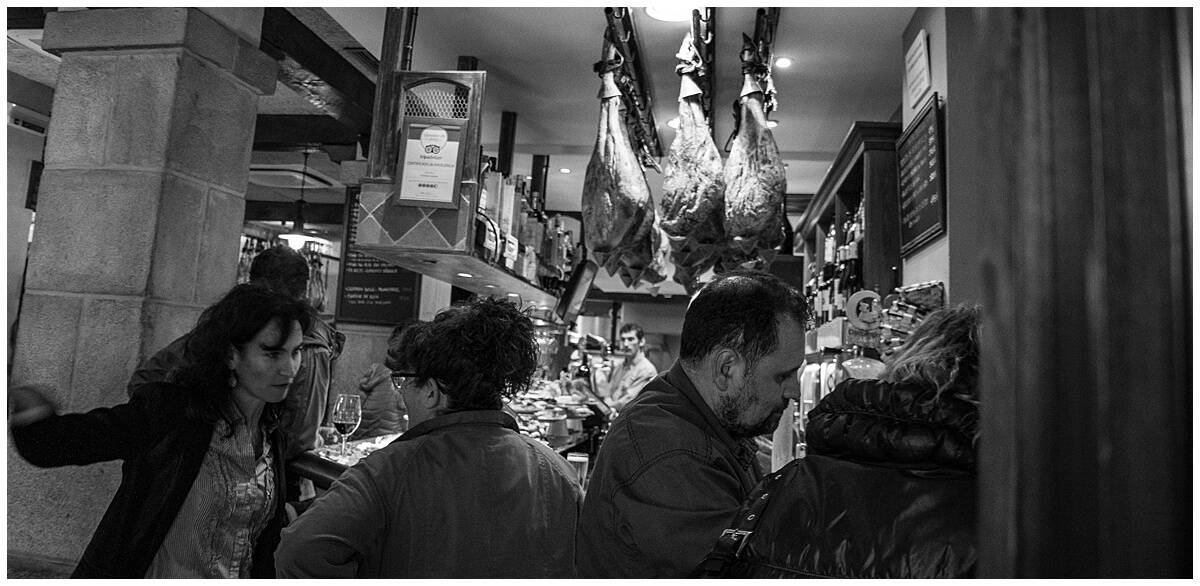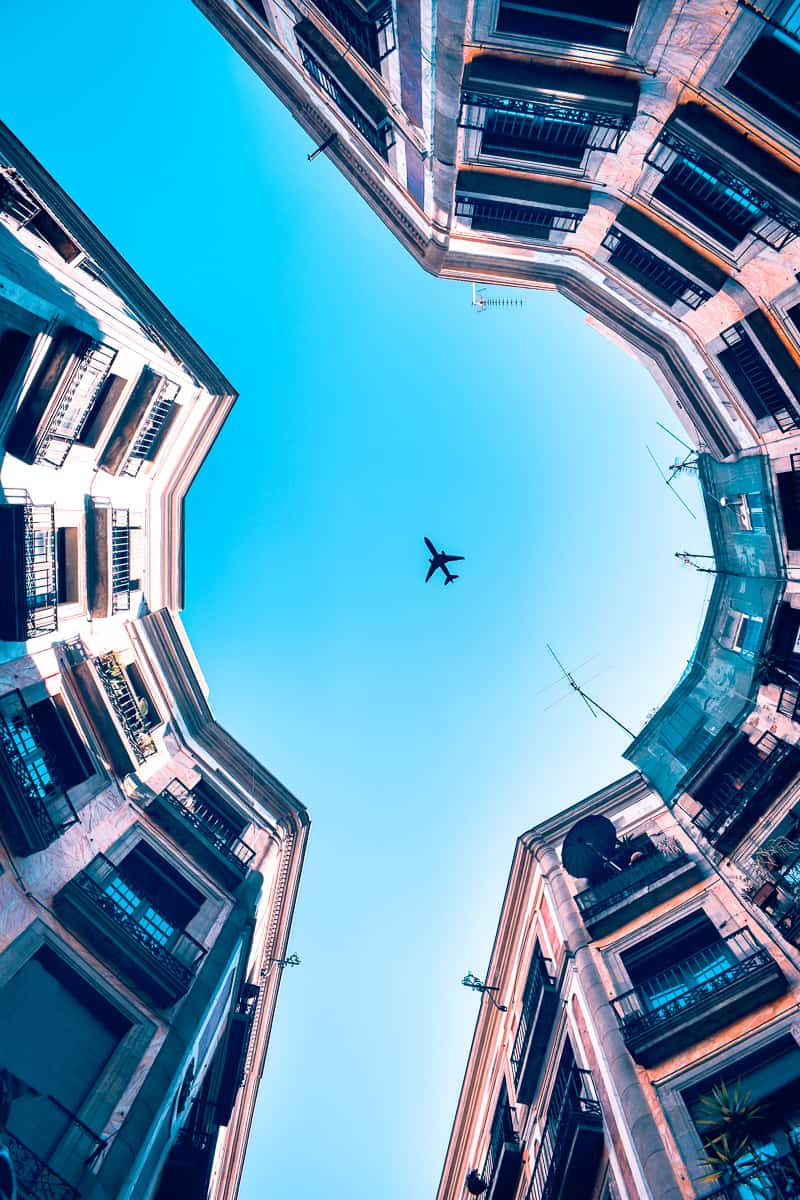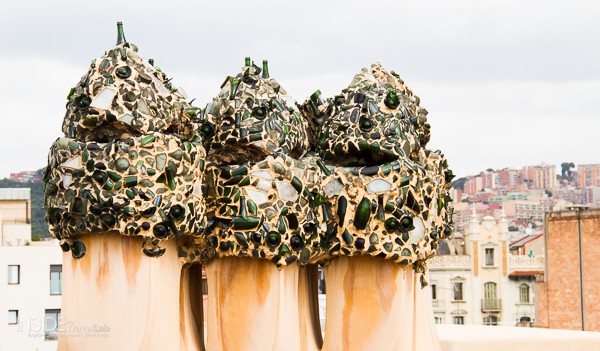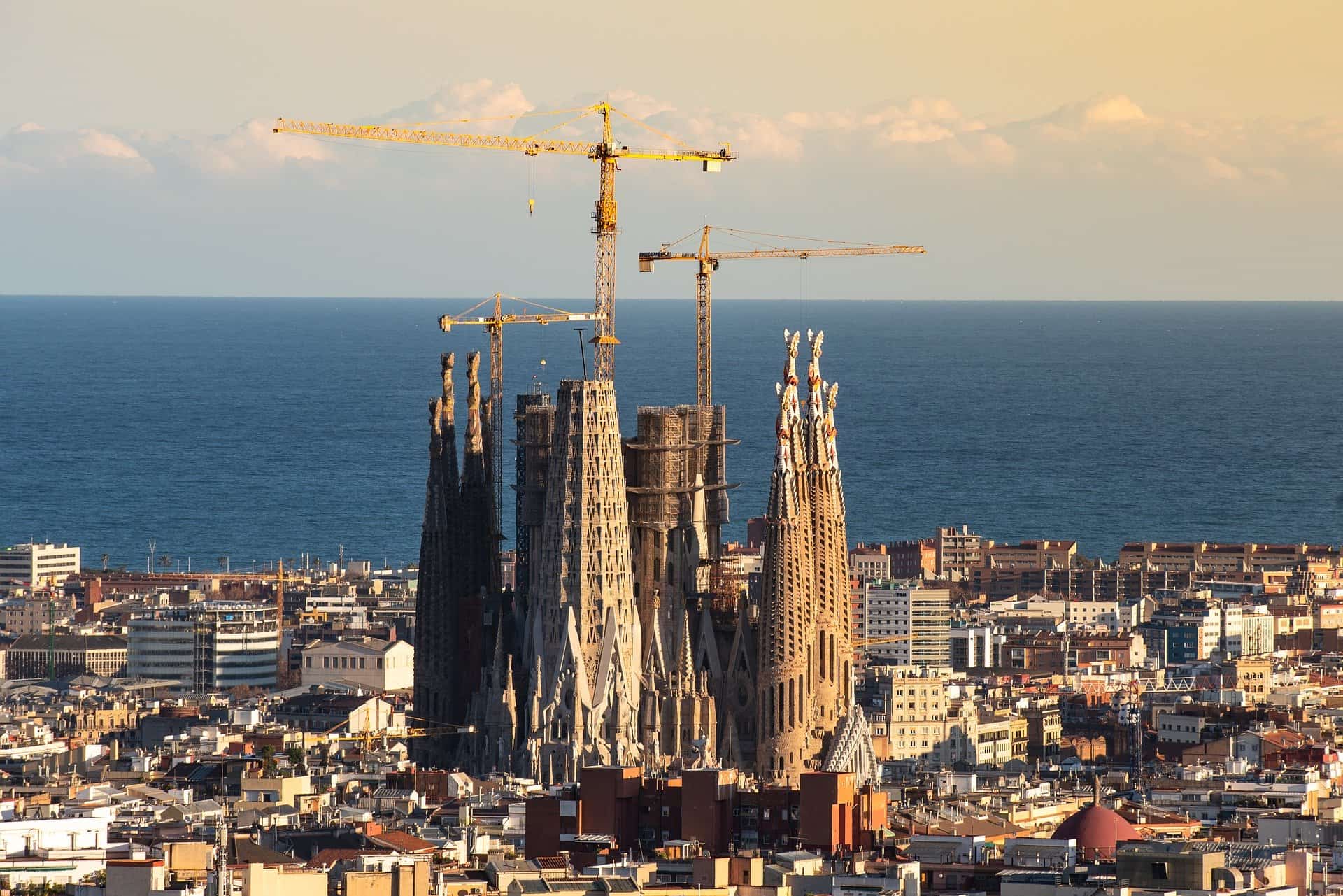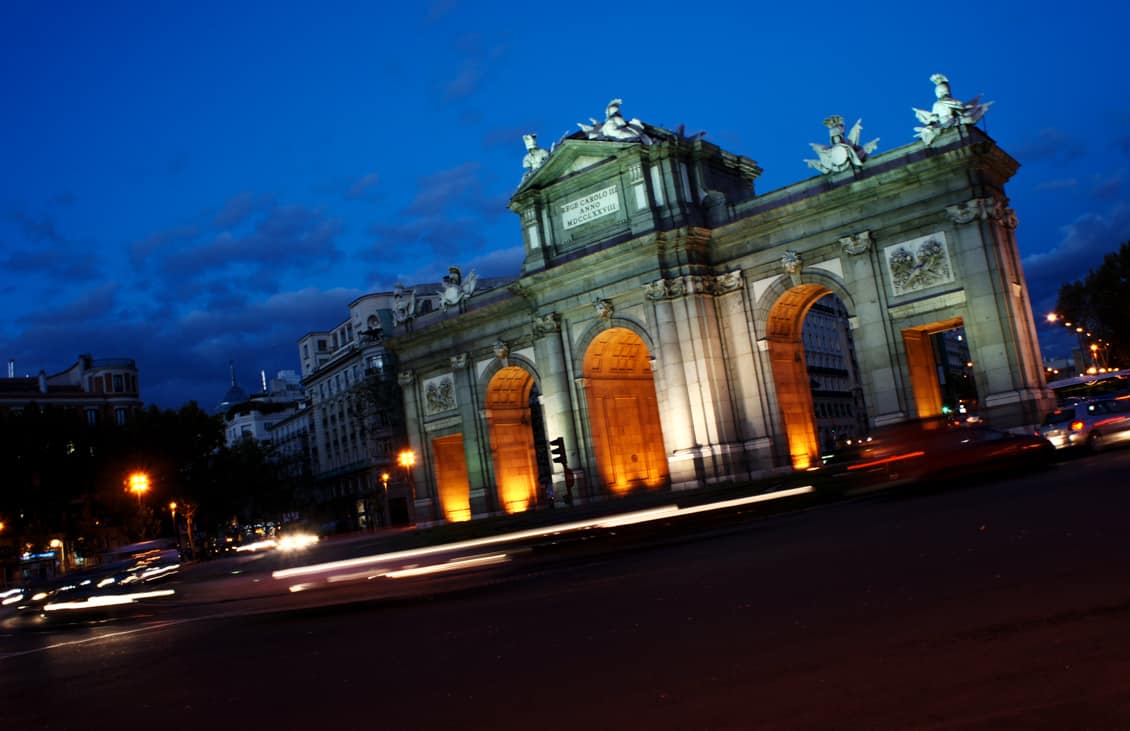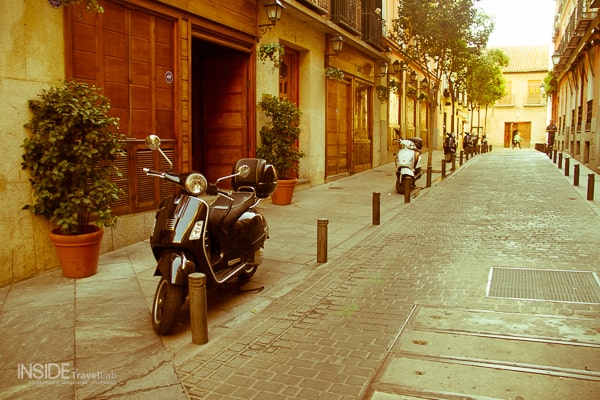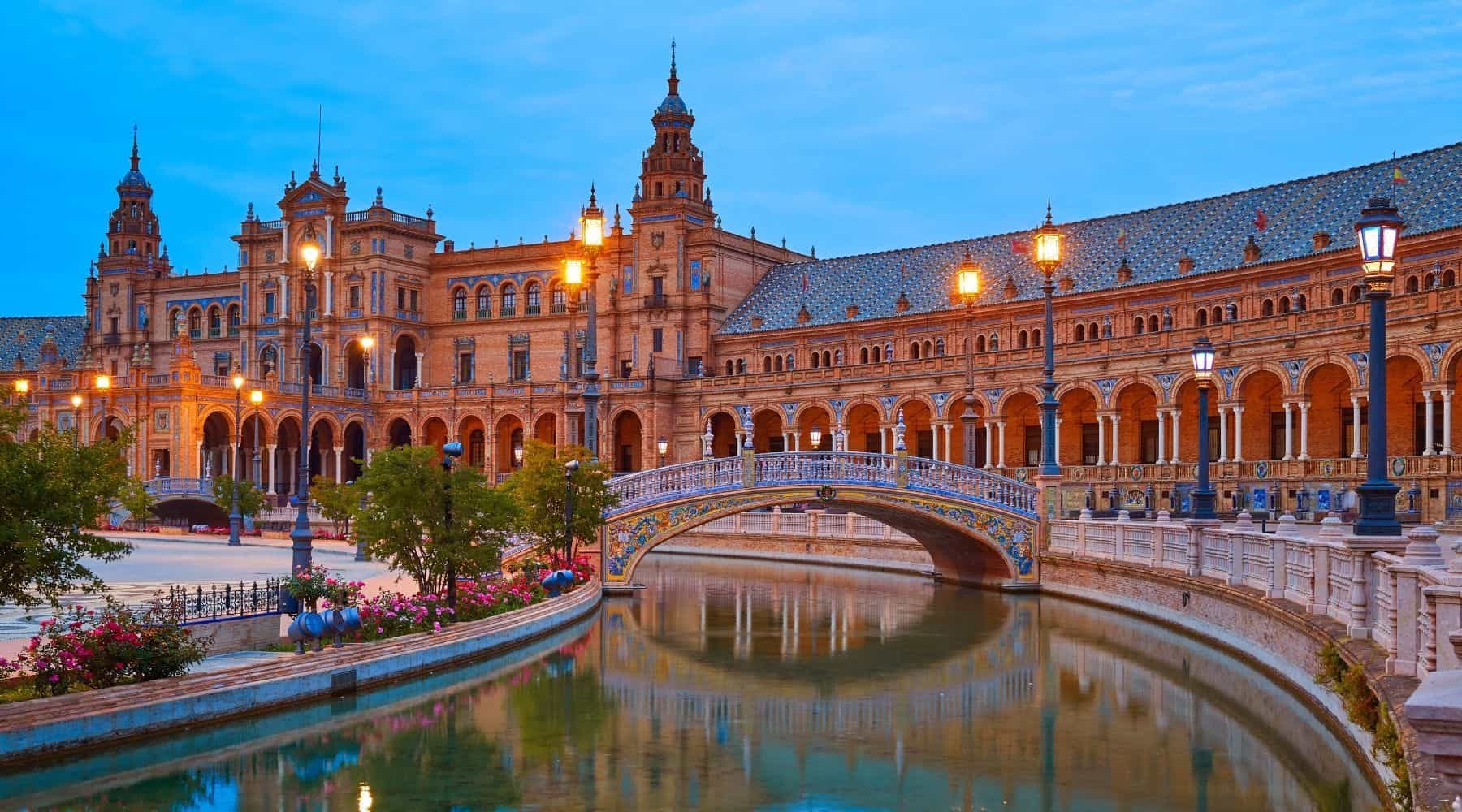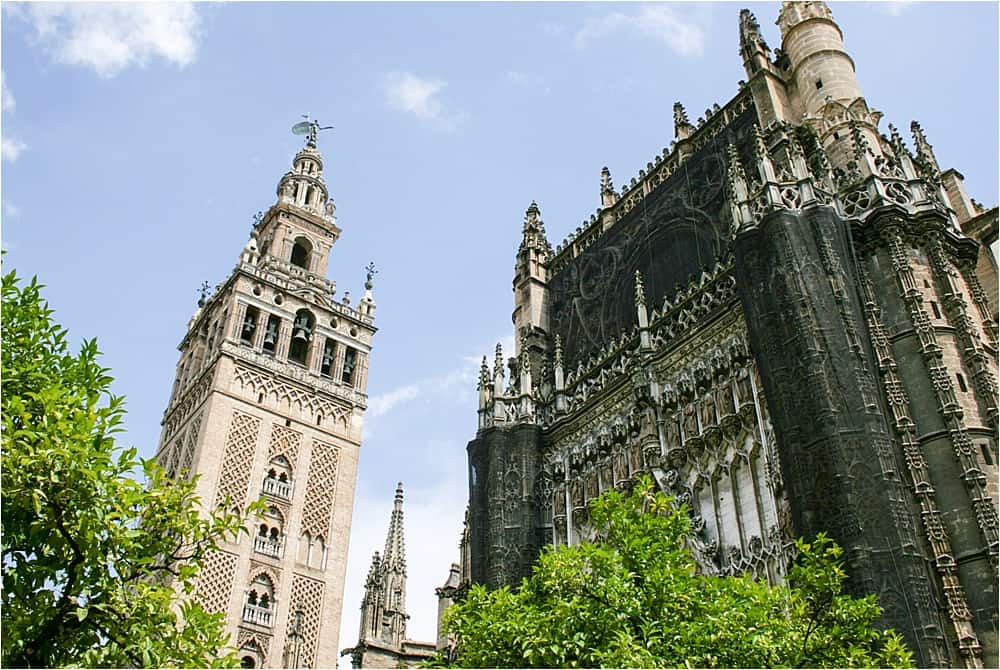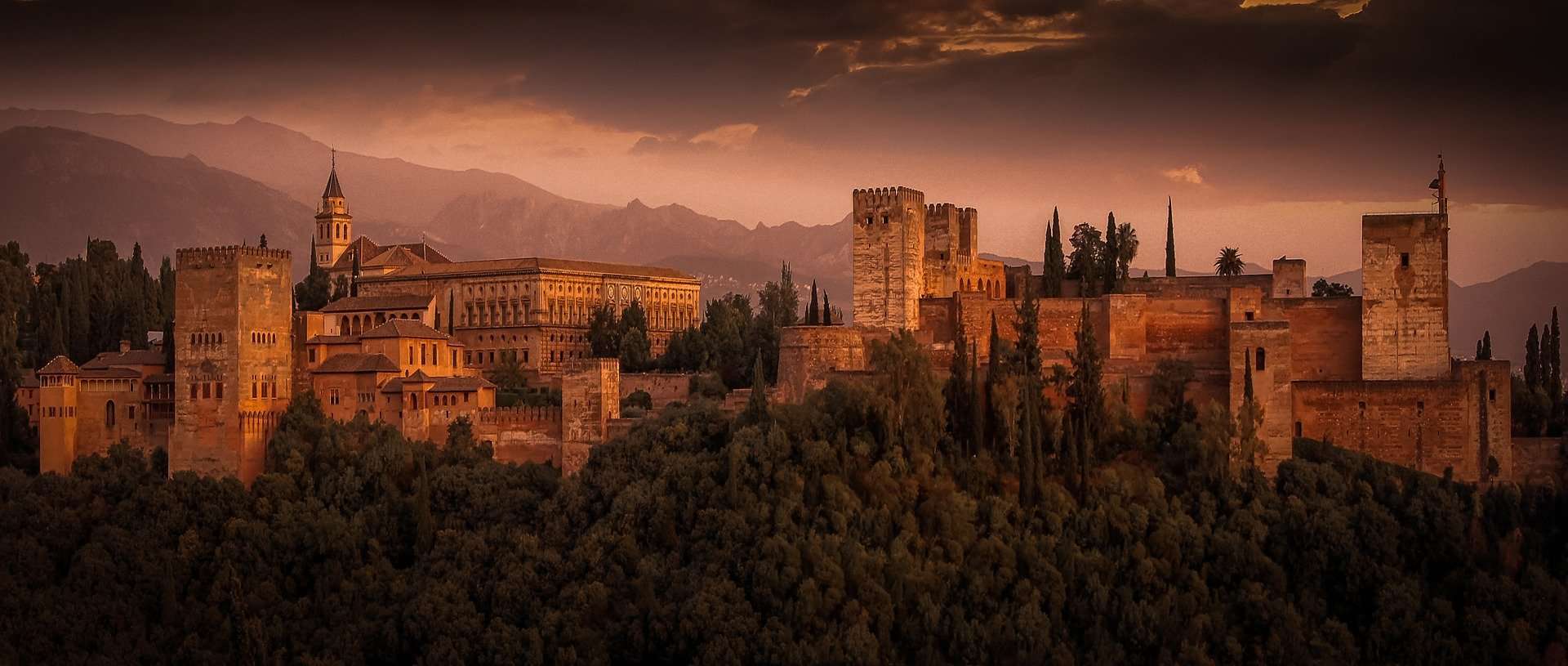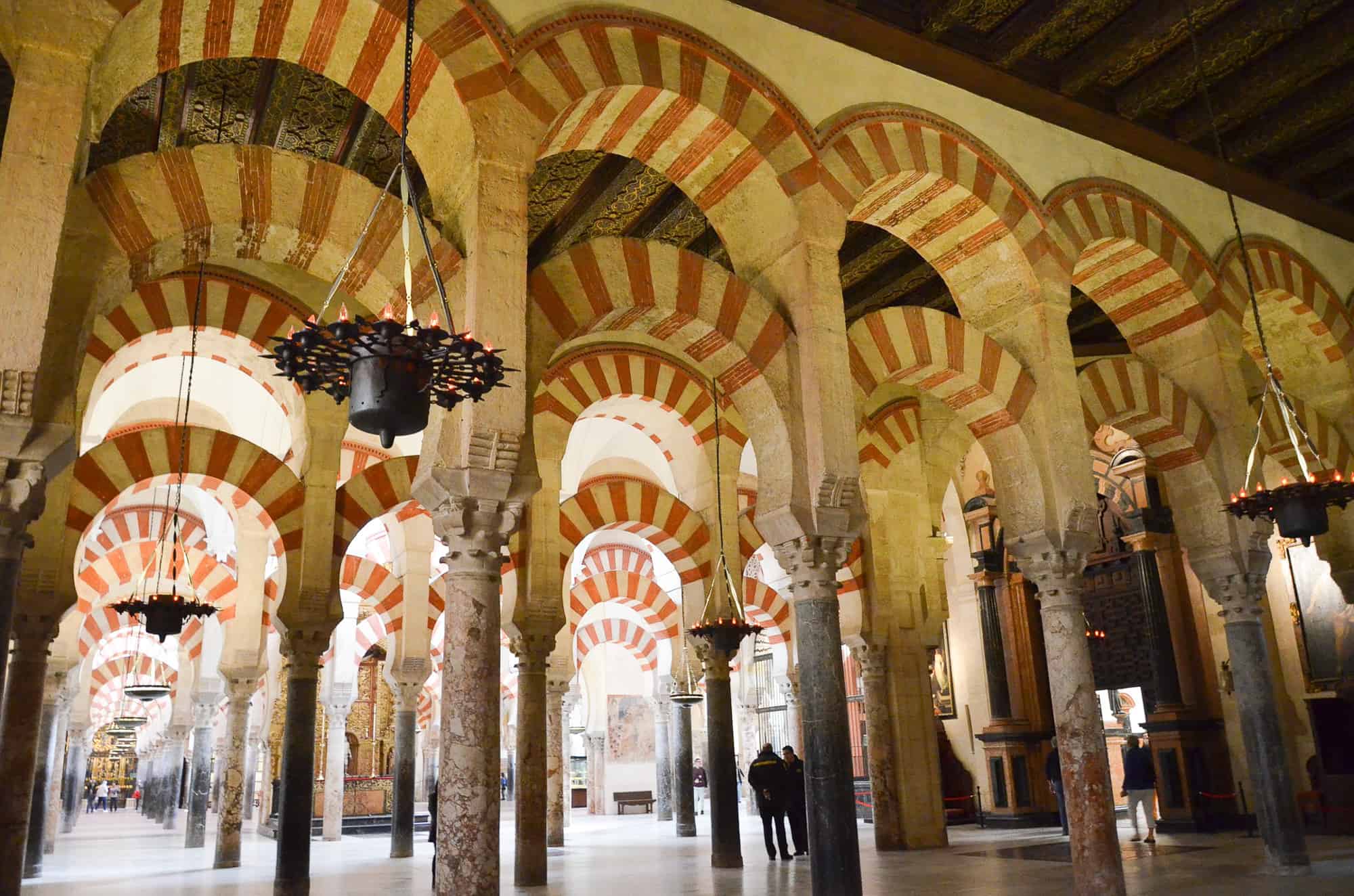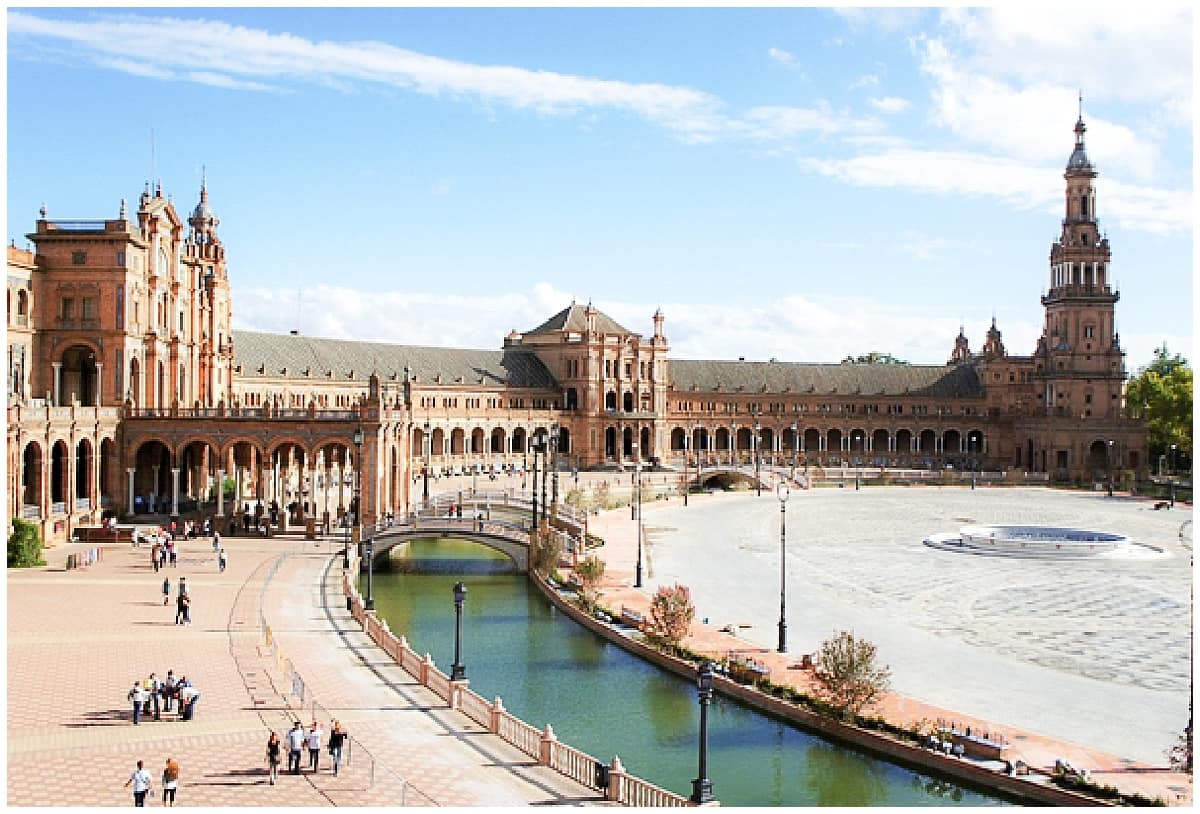When it comes to spending a week in Spain, you’ll find many ways to slice and dice an itinerary. Spain’s a fascinating country with different languages, landscapes and loves. Here’s our inside itinerary for one week in Spain for first timers. Plus, some suggestions for secret spots and the next places to visit if you’re lucky enough to return.
Your Plan for A Week in Spain
First of all, you need to make your peace with the fact that you cannot hope to see it all. Spain is a big place, with culture and atmosphere crammed into every last rocky cove, grand museum and tapas bar. You can’t manage to see the wonders of Bilbao, and the Canary Islands and the Balearics and Seville all in one week.
Map of Spain
What you can do, however, is taste three distinct regions, see world class art, UNESCO World Heritage Sites, taste award-winning food and let your hair down in a country that loves to live life to the full
In this itinerary for Spain in a week, we’re going to focus on the three main cities of Barcelona, Madrid and Seville. In addition, we’re going to try to get you out into the countryside and smaller villages of Spain, to give you more of a well rounded experience and a great taste of the features that make Spain tick.
- Just looking to drive Andalucia? Check out this southern Spain road trip itinerary here.
- Want to explore more of the islands? Check out this guide to the best islands in Spain for families here.
What to Know Before Travelling to Spain
Language
Spain has several different languages but the one that most of the world knows as Spanish is Castilian Spanish. You’ll hear (and see) Catalan in Barcelona and around, as well as Basque in San Sebastian and the Basque Country.
Money & Currency
While you can easily use your credit and debit cards in many of the cities, Spain is still a cash-first kind of place. The currency is the Euro and, as ever, it usually makes sense to exchange money before your trip rather than at the airport or hotel desk.
Getting Around Spain in a Week
The big decision for this Spain in a week itinerary is whether you plan to use the high speed trains to train-hop between the cities. Or whether you decide to go for a road trip based plan instead.
There are pros and cons to each. With a car, you can explore more remote areas of Spain, take photos from viewpoints and bundle a whole load of luggage in the back, which is handy if you’re travelling with kids.
On the other hand, you will have to pay for parking and negotiate driving in the three big cities, which is no easy feat.
The high speed trains are fast and comfortable but you will miss out on exploring the countryside and you will have to stick to a strict schedule.
Where to Stay in Spain
Spain has a wide range of accommodation, from the luxurious to the what-the-hell-is-that? You’ll find international hotel chains, Air BnBs and more. One thing to point out is the concept of the Parador: former historic buildings that are now owned by the state and which have been converted into hotels with restaurants designed to preserve the local traditions and culture. As they’re subsidised, they’re also usually reasonably priced and make a great addition to your Spain in a week itinerary.
Flights to Spain
Spain has 36 international airports, but for most long haul flights, you’ll arrive into Barcelona or Madrid. This itinerary plans on a flight into Barcelona and out from Seville in the south. If that doesn’t work for you, check out nearby Malaga in the south and Faro to the west in Portugal. Alternatively, you can take the train back to Madrid and fly out from there.
Have more than a week in Spain?
We’ve hardly scratched the surface when it comes to this rich and complex country. You could check out some of Spain’s best road trips, like this one through the northern coast in Galicia. Or add on a few days in the former capital of Toledo or take in the shimmering Arts & Science village in Valencia.
If you have more time, don’t forget that Spain extends to the Canary Islands like Tenerife and the Balearic Islands like Ibiza (click here to find out more about that.)
You can also travel south to visit Gibraltar and on to Morocco.
Eating Out in Spain
Food is a big deal in Spain. Well, allow me to reprhase. Eating out and eating togeter is a big deal in Spain. Lunch typically starts late (after 2pm) and dinner even later (8pm is early.)
Breakfast often involves a dark, strong, short coffee in a bar with a slice of toast. But lunch and dinner are seriously involved affairs.
It can be a tricky timetable to adapt to. After years living in Seville, I still found myself hungry way before lunchtime rolled around. In tourist hotspots, you’ll be able to find something outside the normal mealtimes but once you venture furthher off track, you’ll need to fit in.
Spain is fiercely proud of its cuisine and even in big cities like Seville, you’ll be hard pressed to find more international food. But then again, that’s part of the joy of travel. To head to Spain for a week and to enjoy Spanish food.
What to Wear in Spain
Spain is a forgiving country – but it is also a well dressed one. Shorts and strappy tops are rarely seen. Even in the midsummer heat in Seville, you’ll see men in trousers and leather shoes, not shorts and flip flops. To feel comfortable at dinner, wear cotton blouses or shirts and trousers. But don’t stress about it. It’s highly unlikely that anyone else will be…
Your One Week in Spain Itinerary
This itinerary covers one week in Spain, starting in Barcelona. It will give you a great introduction to the regions of Catalunya, Castilla and Andalusia, which each have different characters and customs.
Day One: Arrive Barcelona
Oh, Barcelona, you beauty, you! All full of architectural wonder, fiery history, intrigue and, let’s not forget, a great beach.
In this one week in Spain itinerary, I’ve arranged the “must-sees” in Barcelona into day two.
Why? Because depending on where you’re coming from, you may simply be exhausted with jet lag on day one. If you’re not, that’s great. I have outlined some recommendations below.
If you are, don’t worry. It will get better. Order yourself some nice tapas and snuggle beneath a duvet. A great adventure awaits.
- Some suggestions for unusual things to do in Barcelona
- Enjoy our three day itinerary for Barcelona
Barcelona: a city to return to again and again
Day Two: Barcelona
Right, today’s the day to see Barcelona’s classic sights. Wear your comfy walking shoes and have your camera at the ready because there is a lot to see.
As you only have one week in Spain, I’d recommend you join a guided tour to help you make the most of Barcelona. While you can walk along Las Ramblas, Passeig de Gràcia and the Sagrada Familia, it’s a little further out to Parc Güell and Montjuic.
Plus, a good tour guide will have arranged your tickets in advance so that you don’t lose time standing in ever-snaking queues. Barcelona is a popular place, particularly in the summer.
Revolutionary at the time: embedding broken glass
HIGHLIGHTS OF BARCELONA
The Gothic Quarter (Barri Gotic)
Take an early morning stroll through the Gothic Quarter to soak in the atmosphere of the gloomy shadows and sunlit puddles. The medieval streets contain trendy Catalan restaurants and bars as well as flower stalls, retired people en route to their morning newspaper and a flower market at the weekend.
Book a guided tour to learn more about the architecture or simply wander around and enjoy the atmosphere.
The Sagrada Familia
Your first “sight” is the Sagrada Familia, the icon of the city. Work started here in 1882 and still has not yet been completed. As cathedrals go, this one is the one worth seeing. It’s dripping in whimsical stone turrets and dazzling spires and I can promise you that you won’t have ever seen one like it. It’s the invention of local genius Antoni Gaudí, which brings us nicely on to the next set of must-sees.
Casa Mila: worth it on any Barcelona itinerary
Passeig de Gracia and Casa Mila
Passeig de Gràcia is not just a street, nor even a boulevard or avenue. It’s a journey through the history of Barcelona and its explosion of architectural brilliance at a certain point in time.
Here you’ll find the world-famous Casa Mila, with whirling turrets and an interactive museum that tries to peel back the layers of Gaudí’s genius. But you’ll also find gorgeous hotels and other architectural gems that explain the build up to the Gaudí phenomenon. I’d highly recommend you take a tour along this street in order to get the full story.
Parc Güell
Further from the city centre, enjoy the imaginative sculptures from Gaudí in Parc Güell. This 17 hectare green space delves into Gaudí’s vision of nature and includes the famous ceramic blue lizard.
A Night Out
Escape the tourist crowds with our inside guide to Barcelona here. Written by locals, you’ll be able to get away from the overpriced, under flavoured fare.
The Miro Sculpture: Avoid queues at art museums by looking up at the sky instead
Day Three: Barcelona to Madrid
Today, you’ll wake up in Barcelona and go to bed in Madrid.
If you’re visiting Spain in summer, take an early morning walk through La Barceloneta to glimpse the coast and the wide, sandy shore. If it’s winter, it will be too cold! Instead, simply hot foot it to Madrid!
It’s around three hours by train between Barcelona and Madrid on the high speed AVE and around the same if you travel by car.
If you’re driving in Spain, then consider stopping off in Tarragona to see the Roman amphitheatre and for great views of the coast.
For this Spain in one week itinerary, I’ve gathered Madrid’s highlights into tomorrow’s itinerary when you have the full day.
Here are my suggestions for things to do in Madrid if you have more time:
Day Four: Madrid
Madrid is all about the art, baby, even if you don’t think you’re into it.
The Golden Triangle
Start with the magnificent El Prado as your introduction to the Golden Triangle of Art in Madrid. Amid grandiose surroundings, discover work by El Greco, Goya, Ruben and Velázquez and see Las Meninas.
Then, walk across to the Thyssen, where rich scientists have arranged art as though it were the periodic table.
And finally, head to the Reina Sofia for perhaps Madrid’s most famous work of art: Guernica from Pablo Picasso.
I would highly recommend you take a tour that encompasses each of these three museums to maximise your time and deepen your understanding.
The Literary Quarter
You’ll need a break for lunch at some point, so take a slight detour to Madrid’s Literary Quarter where tapas bars and bodegas spill into the streets. Here Cervantes, author of Don Quixote, used to live alongside arch-rival Lope de Vega. Today, you’ll find street artists and pavements decorated in gold.
Churros & Chocolate (& Other Food)
In the late afternoon, make your way to Madrid’s oldest chocolateria for some churros and pop into gentrified Mercado San Miguel to taste some regional delicacies.
Take a glimpse at the outside of the Royal Palace and then settle in for an early night – or go wild in the Malsaña neighbourhood.
Day Five: Madrid to Seville
Take an early high speed AVE train straight to Seville and spend the 2.5 hours watching olive groves whizz past the window. If you’ve chosen to drive this one week Spain itinerary, then consider switching day five and six around. By road it makes more sense to stay in Cordoba, with Granada as a day trip, before heading to Seville.
But by train, there’s no contest: Madrid direct to Seville it is.
Seville
Seville is the fiery city of the south, the main hub for Andalusia.
Christopher Columbus applied for funding for his infamous voyage from within the walls of the Real Alcazar palace; the Torre del Oro on the banks of the Guadalquivir counted the golden treasure that returned.
Seville’s Old Town is made for walking and getting lost – and cars can barely squeeze between the whitewashed and yellow walls.
La Giralda: the mosque that became a cathedral and a modern meeting point for a night of tapas
Orient yourself by La Giralda, the towering cathedral monument, and wander between the orange trees, listening for the sound of flamenco and stopping for the odd cerveza.
Both Seville Cathedral and the Real Alcazar are impressive buildings. But with Granada and Cordoba on your list for tomorrow, I’d recommend you spend your time a different way in Seville.
Soak in the hot and cold pools of the Baños Arabes. Cross to Triana and wander along the riverbanks. Head to the Flamenco Museum and simply sit in the shade, watching the horses walk by.
Enjoy Seville. It’s what residents do best.
- Uncover the hidden gems of Seville
- How to enjoy Triana in Seville
- How to find the best souvenirs in Seville
Where to Stay in Seville
Where to Eat in Seville
Day Six: Cordoba & Granada
Wow, are you in for a treat today!
The Mezquita in Cordoba ranks as one of the most beautiful interiors I’ve ever seen. And the UNESCO World Heritage Site of Granada expands across the mountain tops as an entire city of elegant design.
Sadly, bloody history underpins them both and you can read more about that here.
However, it’s a long day, whether by organised tour or self-drive, with an early start and late return. But it’s worth it.
The Mezquita in Cordoba
Cordoba is the kind of pretty town you’ll find all across Andalusia, with orange trees, flamenco dot dresses and lacy black fans hanging in picturesque doorways.
But the Mezquita is like nothing else on earth. Officially called the Cathedral of Our Lady of the Assumption, this grandiose cathedral was built right on top of a former mosque.
Its interior of stone arches, one after the other after the other, sends shadows and sunlight across the gloom in a rainbow of quiet contemplation.
It’s simply beautiful. And worth it, even if you only have one week in Spain.
The Alhambra in Granada
Next up in the razzle-dazzle stakes is the former palace of the Alhambra in Granada. Like Cordoba, Granada itself is a charming place that brims with character against the backdrop of snowy mountains.
But the Alhambra Complex steals the show. Rose gardens, ornate fountains, creative calligraphy and impressive architecture make this one of the few palaces I’ve visited in the world that I would actually like to live in.
One word of warning, though. Tickets are timed and sell out fast under normal circumstances. Book in advance if you’re travelling in the peak season – and don’t be late!
Day Seven: Fly from Malaga or Seville
And so, your travel time is at an end. You’ve reach the end of this one week in Spain itinerary.
Depending on your flight time, you can spend more time in Seville, checking out areas like the Plaza España and taking a cruise along the river.
Or, if you plan to fly from Malaga, then take a detour to the teetering village of Ronda en route and walk across the rickety bridge. Or else, just head to the seafront in Malaga for a final dose of sun, sea and sand before you fly home.
FAQS About a Week in Spain
Is a week enough in Spain?
Can you really see Spain in a week? Not fully, of course. If you have two weeks, so much the better and even better than that is to split your time into separate trips, relaxing and delving into the culture of different parts of the country and heading out to the islands.
But not everyone has that luxury, particularly if you’re travelling across from the United States.
One week is crazy amount of time to try to see “all of Europe.” But one week in Spain is pretty reasonable, you’ll still be able to see a lot.
How much cash do you need for a week in Spain?
In the bigger cities, you will often be able to pay by card. However, in taxis and smaller villages, cash is still king. A lot depends on your travel style, but as a general rule, budget around £40-50 per day per person for meals, attractions, taxis and other incidental expenses.
What do I need to pack for a week in Spain?
First of all, make sure to check out our checklist for international travel and the ultimate packing list. People in Spain dress in quite a stylish manner, so to fit in, think leather shoes instead of flip flops and cotton blouses instead of sleeveless T shirts.
- Don’t forget to pack a plug adapter that will work in Spain, like this one.
Spain Travel Tips
- Check the weather before you go. It does get cool during the winter and in the north of Spain.
- Learn a few phrases of Spanish before you go.
- Learn to go with the flow and relax about schedules.
- Take one of these road trips through Spain to really get off the beaten path.
- Brush up on the safety recommendations, like whether you can drink tap water in Spain.
More About Spain
Travel around the rest of Spain through her recipes:
- Saltier and wrinklier than Mick Jagger: patatas arrugadas from the Canaries.
- The best churros in Madrid at the oldest chocolatería
- Challenge your tastebuds with the Tenerife food guide
- Why the best pintxos in San Sebastian is a story of rebellion
- The best tapas bars in Seville
- Gin, sin and the Xoriguer Distillery in Menorca
- What makes the olive harvest in Spain so different
- The seven Rioja bodegas you need on your wine-tasting list
- Eating at the world’s best restaurant in Catalunya
- The world’s best pizzeria lives in Spain (yes, Spain)
- The best southern Spain itinerary: how to self-drive Andalucia
- How to spend a summer in Spain
- The ultimate Spain packing list









